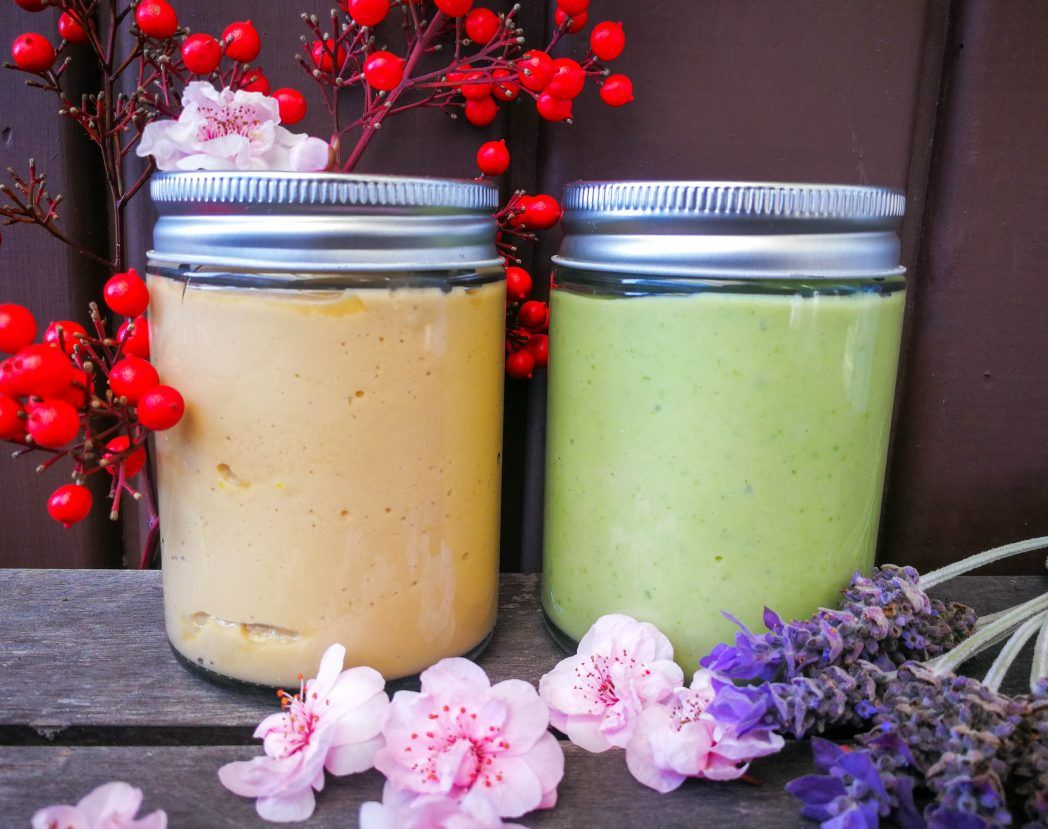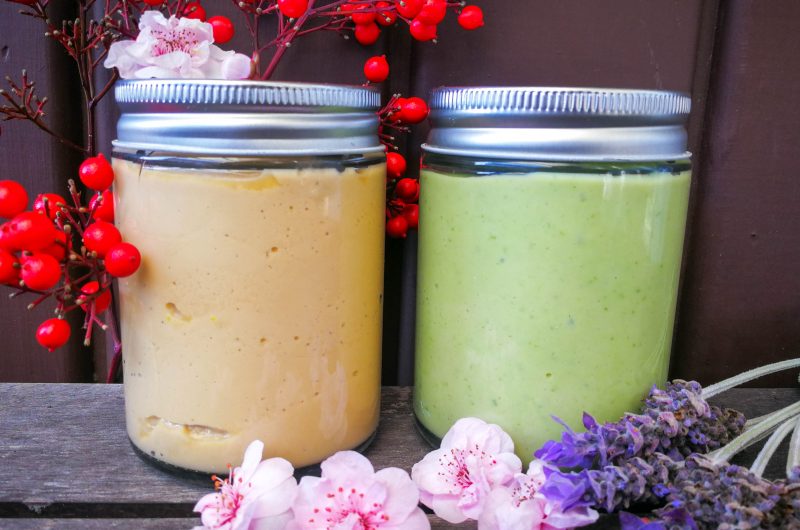
2 Kaya (Coconut Custard Jam) recipes
One of my favourite things to have for breakfast when I go back to Malaysia is Kaya toast. You will find it everywhere and it typically comes in a set. The perfectly charred toast (brownie points if the toast is toasted on charcoal!), slab of butter, thick layer of sweet coconut goodness, rich dark coffee and two soft boiled eggs = heaven. I can taste it now.
Generally, Kaya is usually flavoured with Pandan and green in colour. Pandan is also called Screwpine leaves and grows everywhere in Malaysia. The fragrance is not something I can really describe but it is AMAZING. It features in many Malaysian dishes for its fragrance and also is used as a natural green colouring! If your Kaya is bright bright green, it is probably an essence or colouring. Natural colouring from Pandan leaves can be quite strong but the colour will be darker and duller.
The other Kaya version is brown in colour as it is flavoured with Gula Melaka (Palm sugar). Perhaps a less palatable looking brown colour but the flavour profile of this version, is through the roof! Bonus – it is the easier of the two to make. The sugar gives it a lovely malty taste and with the Pandan leaves fragrance, it leaves little to wonder why some people love this version more.
Once you try Kaya, you will never look back. You might even find yourself sneaking a spoon straight out of the jar!
2 Kaya (Coconut Custard Jam) recipes
There are two Kaya recipes here. Best eaten with toast and a thick slab of butter. Delicious!
Ingredients
- Gula Melaka Kaya
10 Pandan leaves
250g Gula Melaka (or coconut sugar)
400ml Coconut Cream
8 eggs
- Pandan Kaya
10-15 Pandan Leaves
1 cup Caster sugar
400ml Coconut Cream
8 eggs
Some water
Directions
- Gula Melaka Kaya
- Finely slice the Gula Melaka, if using this.
- Add all ingredients into a heatproof mixing bowl.
- Whisk till combined.
- Knot the Pandan leaves together and add to the mixture.
- Cook mixture on a double boiler. A double boiler is where you put a mixing bowl on top of a pot of boiling water to cook the ingredients. Make sure the water in the pot does not touch the bottom of the mixing bowl.
- Stir the mixture continuously.
- When the mixture starts to curdles, remove the bowl from the pot and whisk vigorously till the mixture cools down and smooths out.
- Return the bowl to the double boiler and continue cooking. You might have to repeat the process if the mixture begins curdling again before it is ready.
- The mixture will start to thicken and you will see lines form in the mixture. When this happens, use a spatula or spoon, dip it into the mixture, and draw a line into the mixture. If the mixture does not drip and the line does not meld back together. It is ready.
- Remove the mixture from the stove and whisk till it is cool enough to handle.
- If you would like an extra smooth version of the Kaya, place the mixture into a blender. Blend till smooth.
- Let the mixture come to room temperature before bottling. Ensure you use cling wrap to over the top of the Kaya, making sure the cling wrap is sitting directly on the Kaya surface, to prevent a skin from forming.
- Enjoy!
- Pandan Kaya
- Cut up Pandan leaves in small piece and blend with coconut cream.
- Sieve the blended coconut cream and pandan leaves mixture until only the pulp is left in the sieve. You may need to add some water to make straining easier. Do this bit by bit and try not to add more than 100ml during this process.
- Add in sugar and eggs to the strained mixture.
- Whisk till combined.
- Cook mixture on a double boiler. A double boiler is where you put a mixing bowl on top of a pot of boiling water to cook the ingredients. Make sure the water in the pot does not touch the bottom of the mixing bowl.
- Stir the mixture continuously.
- When the mixture starts to curdles, remove the bowl from the pot and whisk vigorously till the mixture cools down and smooths out.
- Return the bowl to the double boiler and continue cooking. You might have to repeat the process if the mixture begins curdling again before it is ready.
- The mixture will start to thicken and you will see lines form in the mixture. When this happens, use a spatula or spoon, dip it into the mixture, and draw a line into the mixture. If the mixture does not drip and the line does not meld back together. It is ready.
- Remove the mixture from the stove and whisk till it is cool enough to handle.
- If you would like an extra smooth version of the Kaya, place the mixture into a blender. Blend till smooth.
- Let the mixture come to room temperature before bottling. Ensure you use cling wrap to over the top of the Kaya, making sure the cling wrap is sitting directly on the Kaya surface, to prevent a skin from forming.
- Enjoy!
Recipe Video
Notes
- For the Pandan Kaya, at step 1, you could start by using half the amount of coconut cream and then add more in, as required. If you choose to do this, add in the remaining coconut cream at step 3.
- Ensure you keep the kaya refrigerated at all times!
- Ensure the jar or bottle you are storing it in is sterilized, free of grease and any water before bottling.
I hope that you all enjoy this recipe. Let me know what you think and remember to tag me in you posts if you make it!

